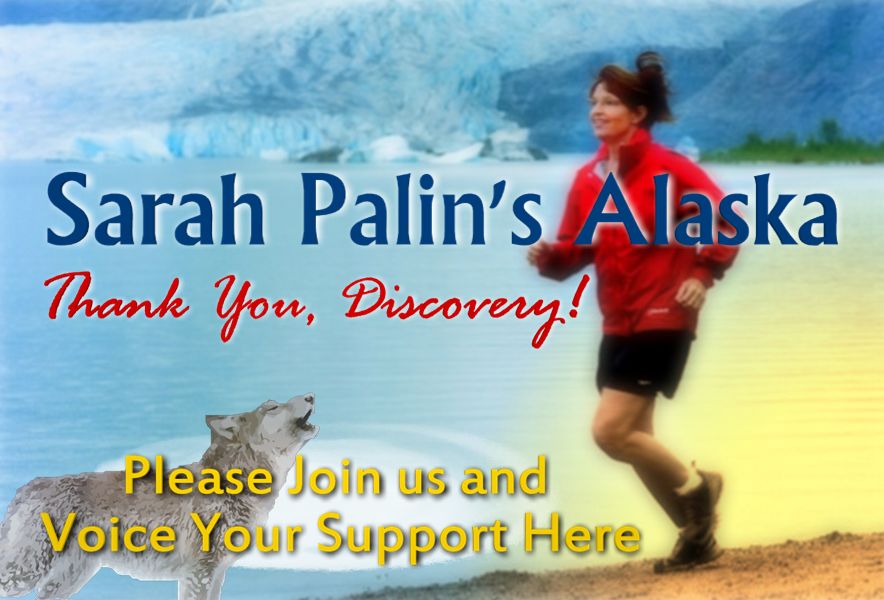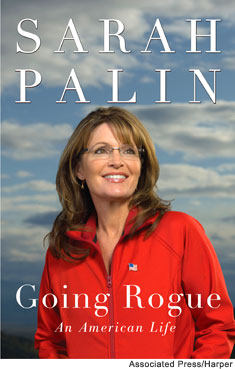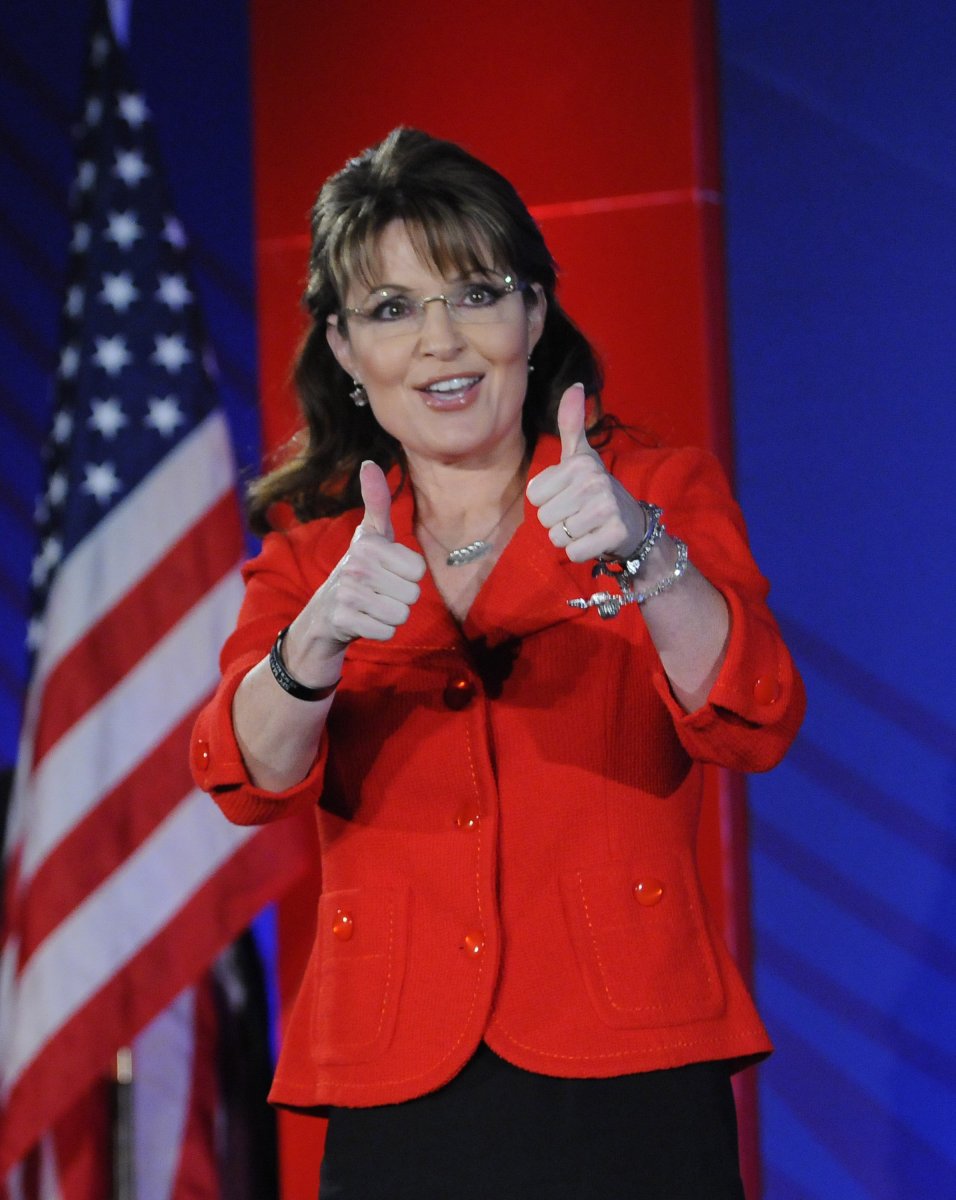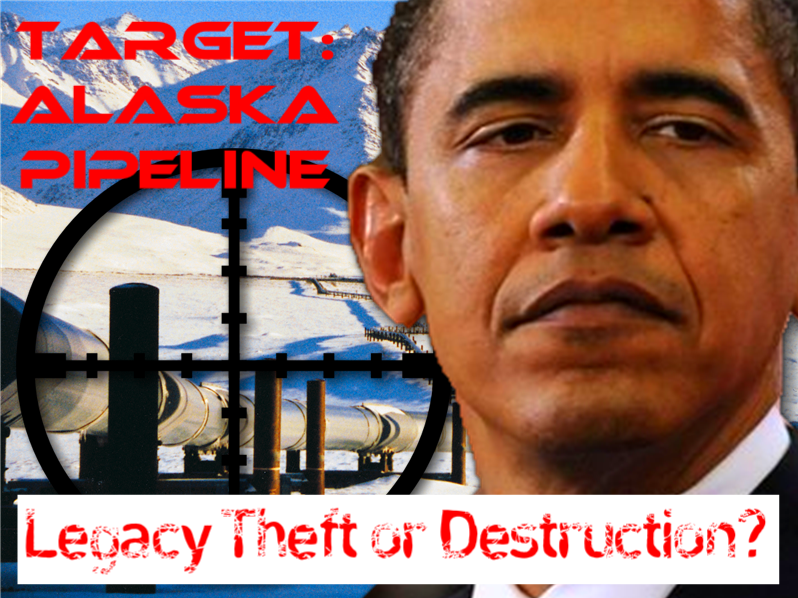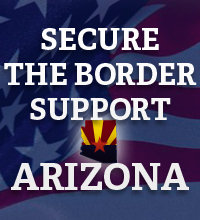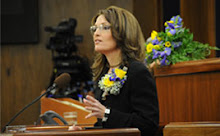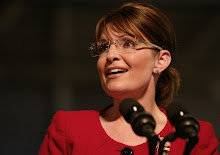Saturday, January 30, 2010
Sarah Palin On The Record With Greta Van Susteren 01-28-10
Sarah Palin On The Super Bowl Ad Uproar (01-28-10)
More Misleading Emails from Paul Streitz
In his latest email broadcast under the auspices of "CT Citizens for Immigration Control," Streitz wrote:
"Sarah PAC as of 6/30/09 has raised $732,767 and disbursed $276,200 in expenses and given $10,000 in campaign contributions. One was $5,000 for Lisa Murkowski for US Senate (AK). The other was $5,000 for the 2010 primary for John McCain. The date of this disbursement was 6/23/09."
The above statement is true. The sentence that follows is a bald-faced lie, to wit:
"How many books would Sarah have sold if this were public knowledge in the fall of 2009?"
Since Streitz co-founded a Draft Committee, he should know full well that FEC disclosures come out every six months. SarahPAC's (spelled "Sarah PAC" in the FEC database) disbursements to John McCain and Lisa Murkowski were made before June 30, and those disclosures were released the month following. They were public knowledge for over two months before Going Rogue became available for pre-order on September 24, 2009 and books were published on November 17, 2009. The FEC disclosures of these disbursements were then four months old, and there were news stories pertaining to them during this time.
Streitz repeats the same rhetoric from his prior email. His pet issue is immigration, and he was forwarded videos which clearly indicated that Governor Palin's views on immigration were to secure our borders and not give illegal aliens benefits reserved for citizens. This was not good enough for him, and Streitz insists upon telling her what to do, and trying to mold her in his own image. For instance:
Senator John McCain is a dangerous man to the Republic. He stands for nothing but his own advancement and he has betrayed the Republican Party at every opportunity. "Hello, Sarah!"
Notice the snarky end. Governor Palin is not obeying the almighty Paul Streitz from CT, so now he's going to "set her straight." He continues....
At the time of the election, perhaps Sarah Palin could have been forgiven for her ideas on immigration (and lack of knowledge) because she was governor of Alaska, not Arizona.
Forgiven? By who? For what? She's against illegal immigration and wants the borders secured. Hello Streitz! The clause regarding her alleged lack of knowledge is laughable coming from a man who co-founded a committee drafting her to be President of the United States. So, what was the point of that exercise? He continues....
In the intervening months, she has done little but promote herself as a celebrity...
So, the Streitz path to being a 2012 Presidential candidate is to fade into obscurity and become a nonentity. So, the point of co-founding a committee drafting her for POTUS was....?
Fortunately, Streitz no longer holds a leadership position there and has been long gone. The 2012 Draft Sarah Committee is now operated by consummate professionals. Randy Highsmith is at the helm, and there are many organizers and volunteers who truly want Governor Palin to succeed in all that she does. They want her to be the POTUS candidate in 2012. They donate to SarahPAC and trust that their money is being used wisely to support candidates the Governor chooses to assist.
Sarah Palin's PAC Raises $2.1 Million in 2009

In spite of the fact that Governor Palin spent the last half of 2009 writing her book and promoting it and did little active fundraising, SarahPAC raised $2.1 million last year, of which $1.4 million was raised during the last 6 months of the year.
According to Chris Cillizza at the Washington Post (h/tp C4P):
"We are thrilled," said Palin senior adviser Meg Stapleton about the fundraising total. "Common sense Americans know the direction we need to take this country and that Sarah Palin will be instrumental in taking us there this year."Read the rest of Cillizza's article here:
For the year, Palin raised roughly $2.1 million through Sarah PAC and ended the year with $900,000 in the bank. She donated $64,600 to candidates and party committees....
Sarah PAC sent no direct mail -- a potential treasure trove of small-dollar donations for the former governor who is beloved by the grassroots of the party -- and raised the majority of her money via the Internet and small events. For the 11 months that Sarah PAC has existed, she has received contributions from more than 14,000 donors....
"We are excited as we feel that we've just begun to tap the Governor's support," said Sarah PAC treasurer Tim Crawford.
Sarah Palin: Obamacare = Stray Dog, So Says President
This afternoon, Governor Palin tweeted:
Complete Transcript of Governor Palin's Facebook Note, which preceded her tweet:
Obamacare = Stray Dog, So Says President
Today at 3:27pm What am I missing, folks? We’re called obstructionists and made to feel uninformed in the Obamacare debate as we point out this is not a patient-driven, market-oriented approach to health care cost challenges. We’ve been saying for months that this is government takeover of our personal choices of insurers and doctors. We’re called liars when claiming that this is all about government mandates and control of up to a sixth of our economy.And yet, shockingly, the president admitted yesterday exactly what we’ve been saying: that his Democrats and lobbyists have crafted bills that in fact will prevent us from keeping our current insurance and/or choosing our own doctor. He said:
The last thing I will say, though -- let me say this about health care and the health care debate, because I think it also bears on a whole lot of other issues. If you look at the package that we’ve presented -- and there’s some stray cats and dogs that got in there that we were eliminating, we were in the process of eliminating. For example, we said from the start that it was going to be important for us to be consistent in saying to people if you can have your -- if you want to keep the health insurance you got, you can keep it, that you’re not going to have anybody getting in between you and your doctor in your decision making. And I think that some of the provisions that got snuck in might have violated that pledge. [emphasis added]
Thanks to Tom Bevan at RCP for spotting this. The president’s statement is shocking, enlightening, and in an odd and unfortunate way also encouraging. Folks, this admission tells us we’re not off-base and we need to stay vigilant so we’re not missing anything else in this scheme. This trillion-dollar government takeover of our health care system is full of
“stray dogs and cats” (the president’s words, not mine), and that’s what we’ve been saying all along.Commonsense conservatives have better ideas on how to start tackling rising health care costs. Reps. Paul Ryan, Mike Pence, Eric Cantor, John Boehner, and others have offered solutions. I commend their efforts to counter the White House’s attempt to ram Obamacare through as these Congressmen seek bipartisan, sensible solutions. I implore them to speak louder because we’re listening, and we’re counting on them!
- Sarah Palin
Obama's Stunning Admission
In an article for Real Clear Politics, Tom Bevan points out something that seems to have gone unnoticed by most. He calls it "Obama's Stunning Admission."
Bevan quotes the president during his appearance at the House Republican retreat:
The last thing I will say, though -- let me say this about health care and the health care debate, because I think it also bears on a whole lot of other issues. If you look at the package that we've presented -- and there's some stray cats and dogs that got in there that we were eliminating, we were in the process of eliminating. For example, we said from the start that it was going to be important for us to be consistent in saying to people if you can have your -- if you want to keep the health insurance you got, you can keep it, that you're not going to have anybody getting in between you and your doctor in your decision making. And I think that some of the provisions that got snuck in might have violated that pledge. [emphasis added]
Well, isn't that interesting? Beval distills this for us to mean:
If we take this statement at face value, President Obama is admitting the the health care bills passed by either the House or Senate (or both) contained provisions which were "snuck in" - presumably by Democratic members and perhaps on behalf of certain lobbyists - that would have in fact prevented people from keeping their current insurance and/or choosing the doctor they want.
Read the entire article here.
All this time later, after calling Republicans out--after calling Governor Palin out--is President Obama quietly admitting that those who were calling him out were right all along?
In her Facebook note, "Troubling Questions Remain About Obama's Health Care Plan," Governor Palin wrote:
The president is busy assuring us that we can keep our private insurance plans, but common sense (and basic economics) tells us otherwise.
In Governor Palin's "Response to the White House," she stated:
I'm pleased that the White House is finally responding to Republican health care ideas instead of pretending they don't exist.[1] But in doing so President Obama should follow his own sound advice and avoid making "wild misrepresentations".[2] Medicare vouchers would give everyone on Medicare the chance to decide for themselves which health plan to use, rather than leave that decision to government bureaucrats. Such proposals are the kind of health care reform that Republicans stand for: market-oriented, patient-centered, and result-driven.
You'll recall that Speaker Nancy Pelosi argued in September:
Health insurance reform opponents continue to spread myths about components of America’s Affordable Health Choices Act. Their efforts to scare seniors have spared no myth, no method and no misrepresentation. It has gotten so bad, the Chicago Tribune’s The Swamp blog wrote, “In political circles, there is a term for the tactic” Republicans are using to frighten seniors about the effects of health insurance reform: "Medi-scare.'' According to The Swamp, Republicans are “capitalizing on fears that Medicare will be undermined… and that the government will force ‘end-of-life' decisions… It's one rhetorical stop short of warning of the "death panels'' that Republican Sarah Palin has spoken of....''
[...]
Myth: Health care reform is a government takeover.
Fact: Under this bill, there is no government takeover of health care. Every American will still be able to choose your own doctor and health insurance plan— and make care decisions with that doctor. The House bill builds on the current system of private health insurance. Indeed, according to the nonpartisan Congressional Budget Office, private insurance coverage will expand by 16 million under the House reform bill. CBO projects that only a total of about 11 million – or 3 percent of Americans – would choose to enroll in a newly-formed public health insurance plan.
So it wasn't a myth after all, Speaker?
You'll also recall Pelosi rushing through the House a late-night health care vote, to which the governor wrote:
Despite Americans’ decisive message last Tuesday that they reject the troubling path this country has been taking, Speaker Pelosi has broken her own promises of transparency to ram a health “care” bill through the House of Representatives just before midnight. Why did she push the 2,000 page bill this weekend? Was she perhaps afraid to give her peers and the constituents for whom she works the chance to actually read this monstrous bill carefully, if at all? Was she concerned that Americans might really digest the details of a bill that the Wall Street Journal has called “the worst piece of post-New Deal legislation ever introduced”?
This out-of-control bureaucratic mess will be disastrous for our economy, our small businesses, and our personal liberty. It will slam businesses at a time when we are at double-digit unemployment rates – the highest we’ve seen in a quarter of a century. This massive new bureaucracy will cost us and our children money we don’t have. It will rob Americans of more of our freedom and further hamper the free market.
Make no mistake: we’re on course to have government commandeer one-sixth of our economy. The people who gave us Fannie Mae and Freddie Mac now want to run our health care. Think about that.
So after all the warnings Governor Palin gave, and all the denying, name-calling, and arrogance of the Obama administration, President Obama makes the stunning admission that they had, in fact, "snuck in" some of the same things they so passionately refuted?
I agree with Governor Palin: "Think about that."
I feel my inner Joe Wilson coming on.
Sarah Palin’s Natural Gas Pipeline: A Dream Moving Forward As TransCanada Announces Open Season

Sarah Palin, like all politicians, made many campaign promises when she ran for Governor in Alaska. Unlike many politicians, Sarah made good on all of hers. And while that is remarkable unto itself, no campaign promise made was more important to the Alaskan people than building a natural gas pipeline from the North Slope to the lower 48.
So important, and so desired by the people, is the construction of this pipeline that promising to get it built was a staple on the Alaskan campaign trail for over 30 years!
As Sarah noted in her book, Going Rouge, An American Life on page 111:
Our campaign would focus on cleaning house in government and facilitating the private-sector development of energy resources, specifically ramping up production of America’s energy supplies and building the 3,000 mile, $40 billion natural gas pipeline that other administrations had been promising to build for decades. It could ultimately go from the North Slope to hungry Midwest markets out of a Chicago hub. No more time wasted recycling the same old arguments and excuses as to why it couldn’t be done. I was determined that Alaska was going to start contributing more to the nation.
If you notice, there is a very important element to Sarah’s plan for development: "facilitating the private-sector development of energy resources." This is Sarah recognizing that in most cases government is not the solution to any given situation, it’s the problem. Politics had stood in the way of getting this pipeline built for over 30 years, so Sarah, using common sense, sought to have as minimal government involvement as possible, and maximum private-sector participation. A refreshing change of pace, and a model for all governments to follow.
On her very first day on the job as Governor, Sarah set the wheels in motion to get this project rolling. From page 125 of Going Rogue:
Ethics reform was already underway, with some lawmakers already under arrest, so to kick off the Palin-Parnell agenda, we started with the natural gas pipeline on our first day in office.
For Alaskans, the term "gasline" is as familiar as "irrigation" is to Californians or "Wall Street" is to New Yorkers. Except that Californians and New Yorkers already reap the benefits of these economic lifelines, while Alaskans have been waiting for more than fifty years to realize the benefits of the state’s vast reserves of natural gas. At least 35 trillion cubic feet of proven natural gas reserves lie untapped on the North Slope, and geologists say there are hundreds of trillions more both on- and offshore. Our oil and gas supplies would be enough to provide 10 years of total energy independence for the entire country.
Below Governor Sarah Palin Lt. Governor Sean Parnell and officials from TransCanada are seen at the signing ceremony where TransCanada was awarded the license to build the natural gas pipeline:

As one can see, the stakes are high, and the rewards, for the entire nation, substantial. After talking about the fact that heavy government interference, labor and environmental restrictions had driven producers out of the country and over to foreign supplies of oil and gas, Sarah Adds:
It was unfortunate that our government’s well-meaning polices had driven producers to other parts of the world where there were no restraint’s on their activities. That was no way to protect the environment or heat the economy.
With my background, I understood the concerns of all of the parties: as a free-market capitalist I understood the bottom line for the oil producers; as the spouse of an oil worker I understood the Slopers and their families’ reliance on oil jobs; as a mayor I understood the communities’ dependence on oil’s economic contributions; as a lover of the land I understood as well the environmentalists’ and Alaska Natives’ concerns.
Sarah goes into further details of her thought process in the book, including how CEO look to maximize profit for their shareholders, and how as CEO of Alaska, it was her job to maximize the benefits to the Alaskan people. I’ve found, over the last few years that many people don’t understand the unique relationship the people of Alaska, as well as the state government, all have with the oil companies.
In Alaska, the Constitution dictates that the oil, natural gas, and other energy resources belong to the people, the citizens of the state. So, just like anyone who buys shares in a publicly traded company, the Alaskan people are shareholders in the Alaskan energy business. As Governor, Sarah took many steps to maximize the values of those shares to the Alaskan people, just as any good CEO would do.

Much has been written about the processes of how the natural gas pipeline project came to be, but the bottom line is this: By creating a market driven process, with great emphasis on the private-sector, Sarah was able to move this pipeline project from 50 years worth of talk, to reality, in just a few short years. I suggest those who are looking for more detailed information on the process read Sarah’s book, and check out the archives at US4Palin, where editor and publisher Ron Devito has carefully documented the entire process.
In this video from Canadian TV Sarah discusses the processes as well as leadership:
OK, now that we have some of the background out of the way, let’s get to the latest updates on the process that will see the completion of the gasline by 2020.
From Yahoo Finance Canada:
CALGARY/ANCHORAGE (Reuters) - TransCanada Corp and partner Exxon Mobil Corp boosted their cost estimates for a planned line to carry Alaska gas to southern markets by up to 58 percent on Friday, as the two ready plans to sign up shippers for the massive project.
The companies said the cost of the 1,700 mile pipeline carrying at least 4.5 billion cubic feet of gas daily from Alaska's North Slope to Alberta will range between $32 billion and $41 billion, up from a previous $26 billion forecast.
The line, mulled for more than a generation, would be among the largest and most expensive civil engineering projects ever undertaken in North America, requiring years of planning and construction and massive financing.
"No matter how you measure it, the Alaska Pipeline Project would be an exceptional world leading project and one of the largest private investments in the history of North America," Paul Pike, Exxon Mobil's senior project manager for the line, said on a conference call.
For Alaska, which depends on oil for nearly all its state operating revenues, a natural gas pipeline is seen as economically crucial. North Slope oil production has dwindled to a third of the 2 million-barrel-a-day peak reached in 1988, and continues to decline.
Some political leaders hailed Friday's announcement as a big step toward reaching the gas pipeline goal.
"Bringing Alaska's gas to market presents a tremendous economic opportunity for the state," Alaska Governor Sean Parnell said in a statement. "Alaskans have waited 30 years to advance this project, and today's news marks a significant milestone in achieving this opportunity."
A smaller line, running from the gas fields of the North Slope to a separately built liquefied natural gas facility near Valdez, Alaska, would cost between $20 billion and $26 billion and could be built instead of the larger project if shippers chose the option.
The backers said their cost estimate rose over initial projections because of an extension of the line to the Point Thomson field on Alaska's North Slope, an expanded gas-processing plant and more detailed engineering than first available.
OPEN SEASON PLANNED
The new estimate for the lines, which could be in service by 2020, came as the partners filed plans with the U.S. Federal Energy Regulatory Commission (FERC) to hold an open season to attract potential shippers.
"This open season will test potential customers' interest in utilizing the Alaska Pipeline Project to transport their natural gas to market," said Tony Palmer, TransCanada's vice-president of Alaska development.
Calgary-based TransCanada is the state of Alaska's preferred pipeline sponsor and holder of a state license under the Alaska Gasoline Inducement Act (AGIA).
It added U.S. energy major Exxon Mobil, one of the three major North Slope natural gas producers, as a partner to its proposal last year. The other two producers, BP Plc and ConocoPhillips are backing a rival pipeline plan of their own and Exxon itself has yet to commit its gas to the line.
However the two partners expect that they've squeezed the cost for shippers down, making their proposal attractive. They plan to a 20 percent capital risk in the project, reducing the costs needed to be covered by customers by between $6 billion and $8 billion.
As well, they've cut their planned return on equity to 12 percent instead of the 14 percent return TransCanada had forecast in its AGIA filing.
Including those cuts and other smaller factors, the partners expect shippers who commit during the open season will pay $500 million less per year on tolls than forecast in the AGIA application.
"Assuming that FERC approves our plan as filed, and ... the customers commit their gas in that initial open season, they will see lower tariffs," Palmer said. "They will see lower tolls to their account on the order of $500 million per year."
Still, the rival Denali project, backed by BP and Conoco, is going ahead as planned, with its own open season scheduled to launch in April.
"I am confident that we will have an attractive commercial offer for our potential customers," said Bud Fackrell, Denali's president. "Today's announcement by TransCanada and Exxon doesn't change anything for us. We're on track."
TransCanada has offered BP and Conoco an equity stake in its project, saying the support of all three producers, as well as the state, is needed before its project proceeds. However negotiations with the rival producers have yet to take place .
TransCanada and Exxon filed plans for the open season with FERC, which has 90 days to approve the proposal. A separate open season will be staged for the Canadian portion of the line.
Along with Governor Parnell’s positive reaction to the news, Republican Senator Lisa Murkowski added:
This marks the first time Alaska has seen a major producer come together with a pipeline company to solicit binding commitments for the transport and delivery of North Slope natural gas to markets in the Lower 48.
The bottom line is this. While there is still some work to be done, Sarah Palin, as well as her capable administration, and the folks at TransCanada and Exxon-Mobil prove the point that private-sector, free market solutions to major issues just make sense.
The fact that this is a viable project, and a solid approach, is underscored by the existence of a competing project in the mix. In the end, everyone will benefit from this competition.
Once again Sarah Palin proves to be a visionary leader who uses common sense solutions to complex issues. Energy independence is both an economic and a national security issue. With the economy in a slump, and wages stagnant, a good reliable supply of cheap, clean, and green natural gas is essential. Using our own resources, rather than enriching nations, and leaders who may not like us very much, is vital.
This is something Sarah Palin has been talking about for years, and unlike most, has used her leadership qualities and negotiation skills to actually make something happen. This is what true leadership is all about.



